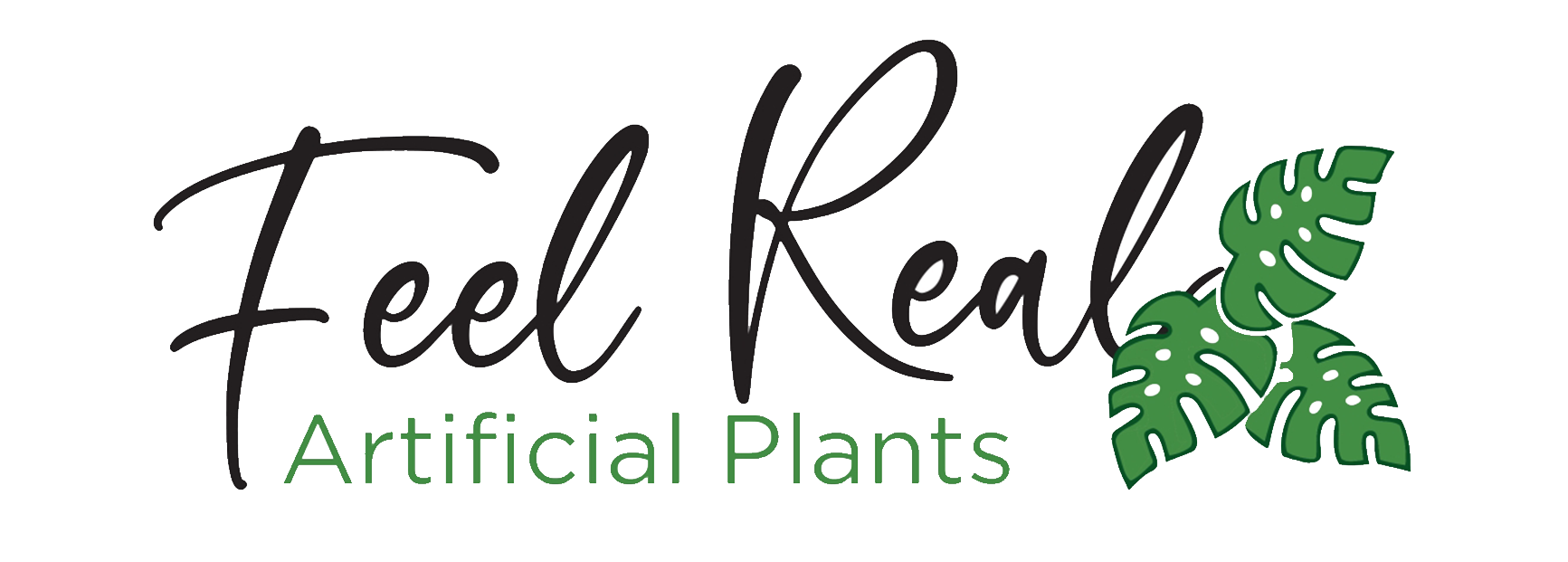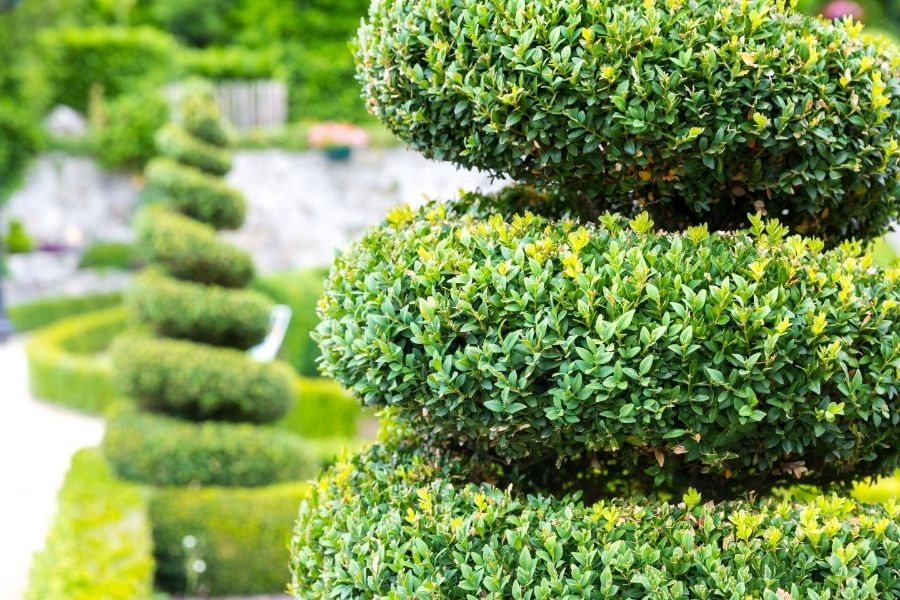Are you dreaming of adding a touch of elegance to your outdoor space? Topiary will be the ideal option. It is the art of sculpting plants into living masterpieces. This centuries-old tradition now is wide used in homes and businesses of all sizes. But the real topiary demands dedication and skill to keep its striking looking. In this guide, we’ll help you choose the perfect green sculpture to your outdoor decor.
Last updated: 11st, Oct, 2025 | Estimated reading time: 8 minutes
– Understanding Outdoor Topiary
Definition of Topiary:
Topiary refers to the art of shaping the plants into ornamental forms, such as animals, geometric shapes, or intricate patterns. This ancient gardening technique has roots in Roman times and was popularized in Europe during the Renaissance. They can be used in parks, gardens and commercial settings to create an eye-catching focal points. Topiary can add a feeling of creativity and transform any outdoor space into a work of art.

Common Plants and Shapes of Outdoor Topiary:
There are several types of plants commonly used in outdoor topiary. With dense foliage and ability to hold a shape, popular plants include boxwood, holly, yew, and privet. These shrubs can be shaped into various styles such as balls, spirals, spheres, cones, or even animals shapes. Topiary shapes bring an element of surprise and sophistication to outdoor areas of all sizes.
Lighted artificial topiary is becoming increasingly popular to enhance outdoor landscape. Artificial topiary trees for the front porch can create a welcoming entrance. Lighted topiary outdoor options, like pre-lit topiary, offer a warm glow. Hanging topiary balls with lights beautifully enhance patios and walkways.
– The Pros and Cons of a Real Outdoor Topiary
1. Advantages of Real Topiary:
Natural Beauty: Real plants lovers will prefer the natural topiary’s organic beauty. The vibrant green hues, and subtle changes in color make real topiary an dynamic addition.
Environmental Benefits: Real plants absorb carbon dioxide and reduce the carbon footprint. Choose living plants, you contribute to the planet’s ecological balance.
2. Disadvantages of Real Topiary:
High Maintenance: Real topiaries need regular pruning to maintain their shape. And consistent watering and fertilizing is required. Without proper care, they may die back.
Susceptibility to Pests and Diseases: Pests and diseases can damage or even kill the topiary if not properly managed.

Weather Sensitivity: Extreme temperatures can impact the health and appearance of real topiaries.
Toxicity: Real topiary trees, such as boxwood, are toxic to pets, especially to dogs and cats. The entire plant especially the leaves are poisonous.
Allergies: Some people or pets may be allergic to certain plants and can experience unpleasant reactions. Natural topiary can trigger allergies for people due to the pollen they release.
Limited Mobility: It is not easy to move a real topiary to a new place/home.
Cost Considerations: Topiary can be expensive to buy. And they require ongoing maintenance expenses such as fertilizers and pest control.
– How to Create and Care for Real Topiary?
It’s Hard to Make Real Topiary:
Creating a real topiary can be a challenging and time-consuming process. Real topiary requires patience and skill. To make the desired shape, you may need to carefully prune and train the plant over several years. It is a slow and meticulous task. You can choose to buy Ready-trained trees and shrubs. But these pre-shaped plants are often expensive. Growing your own topiary from a small shrub is a long-term commitment. It requires consistent attention to achieve the final result. And you don’t known if you can make it or fail.
It’s Difficult to Care for and Maintain Real Topiary:
Once your topiary is shaped, you can’t stop the maintenance. Real topiary needs regular trimming to keep its form. You also need to water, fertilize, and pruning them. Failure to properly care for your real topiary can result in uneven growth and shape loss. Regular care is essential to ensure that the topiary remains an attractive feature.
– The Pros and Cons of Artificial Outdoor Topiary
Advantages of Fake Topiary:
Low Maintenance: The main advantage of artificial plants is its minimal upkeep. There’s no need for watering, pruning, or fertilizing. False topiary is easy to clean. You only need to dust it occasionally to maintain its appearance. They save you time and effort compared to real plants.
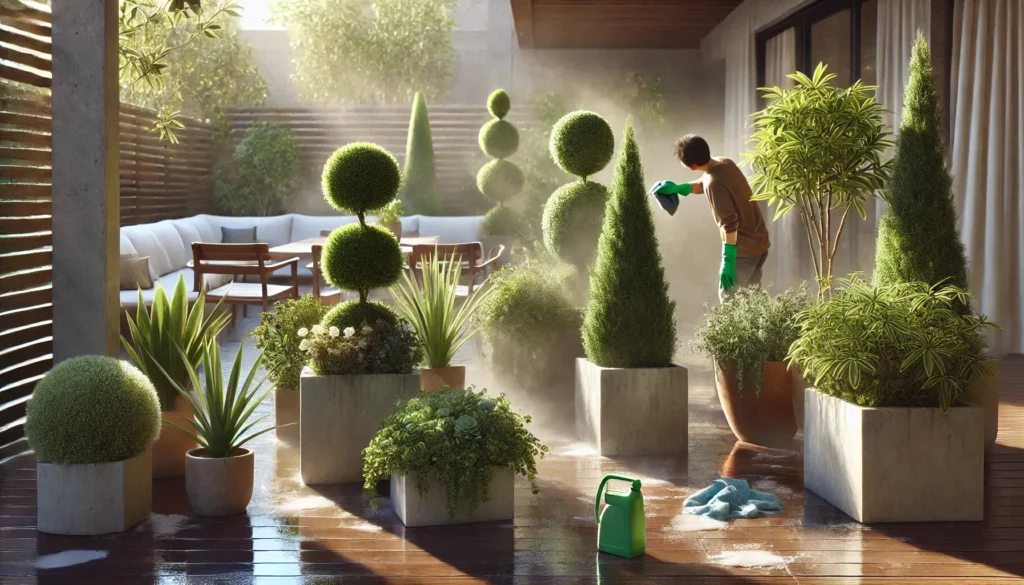
Consistent Appearance Year-Round: The color and appearance of real plants change with the seasons. But artificial topiary maintains its shape, color, and texture throughout the year. You do not need to worry about wilting, browning, or losing leaves during colder months. It will look perfect all the time.
Do Not Attract Insects: Live plants attract pests like aphids, mites, or insects. But imitation topiary will not attract those pests. This makes them a more hygienic choice.
Won’t Shed Leaves: The faux topiary won’t shed leaves, so you do not need to clean up fallen foliage around your yard or patio.
Budget-Friendly in the Long Run: Artificial topiary may have a higher upfront cost, but it can save you money over time. And, there will be no ongoing costs for watering, fertilizing, or trimming.
Non-Toxic and Pet-Friendly: Plastic plants are safe for pets and humans. They don’t trigger allergic reactions, and they are non-toxic. You can enjoy the beautiful topiary without worrying about harming your pets.
Weather Resistance: Many artificial topiary plants are crafted with UV-resistant materials,. So they won’t fade, crack, or deteriorate under the sun’s harsh rays. They’re also weatherproof. They are perfect ideal for outdoor spaces exposed to rain, wind, or snow.
Versatility in Placement: Artificial topiary can be placed indoor and outdoors, regardless of sunlight, soil conditions, or temperature. Fake topiary is a versatile option and fit easily into any setting. You can put them inside a home, in a shaded courtyard, or in a space with little natural light.
Disadvantages of Artificial Topiary:
Initial Higher Cost for Quality Pieces: Artificial topiary can save you money in the long run. But the upfront cost can be higher, especially for high-quality pieces. Premium materials can be expensive compared to basic ones. But the high quality materials make the topiary more authentic and UV-resistant.
They Don’t Reduce CO2: Artificial topiary does not absorb carbon dioxide or releasing oxygen and contribute to the environment.
– Types of Artificial Topiary
Common Shapes of Artificial Topiary:
Artificial topiary comes in various shapes. You can always find the perfect style for your space. The popular topiary shapes include:
Balls – Spherical topiary can be placed in beds or pots. 2 and 3 ball topiary trees are popular. They are made from boxwood, bay leaves, or cedar. They can be used in pairs at entrances or along pathways.
Spirals – Spiral topiaries can add vertical interest and architectural flair to any space. You can choose from formal boxwood spirals to looser juniper spirals.

Cones – Cone topiaries bring height and drama to sofa tables, or gardens. Cypress cone topiaries conserve space and add architectural interest. Cone-shaped topiary works well in formal gardens and commercial spaces.
Animal Forms – From rabbits to peacocks, artificial topiary can be shaped into whimsical animal designs. They add a playful touch to outdoor areas.
Round Bay Trees – It is a timeless and refined option. They can be used in gardens, patios, and doorways.
Cubes – It is a contemporary choice that adds a structured, geometric element to outdoor landscaping.
Popular Artificial Topiary Varieties:
Boxwood – Boxwood is a popular choice for artificial topiary. Its clusters of small, dark green leaves create a thick, full effect. It is often used in ball, spiral, tower, and triple ball forms.
Cedar: Cedar offers a looser, more natural look. It is suitable for outdoor use.
Cypress: Cypress has dense, feathery foliage and a deep green color. They provide a fuller effect and softer appearance than boxwood.
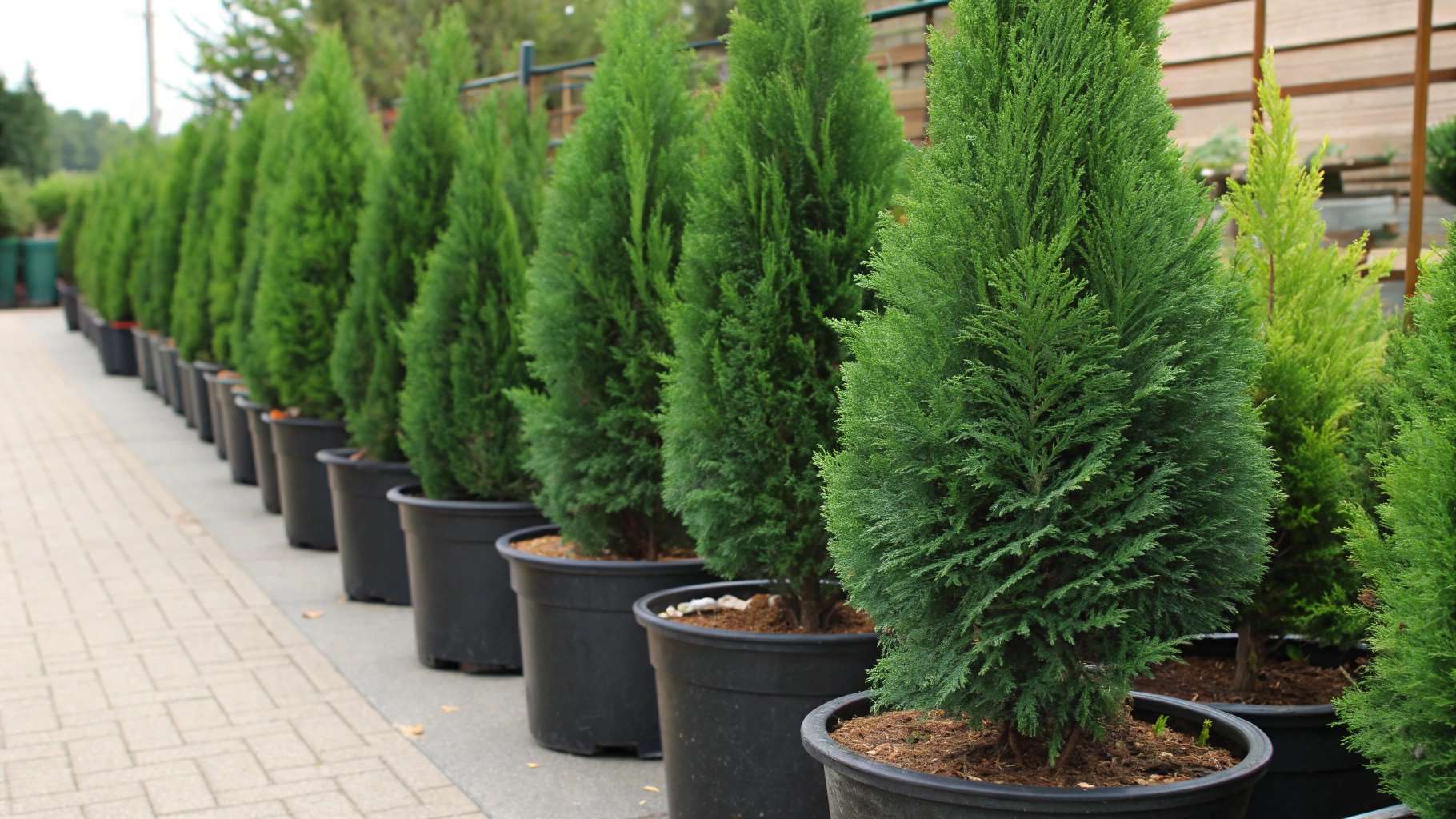
Bay: With their larger size, bay leaves give a natural effect and a sculptured look.
Rosemary: Rosemary spirals add color and detailing to a topiary plant.
– Is Artificial Topiary Tacky?
Artificial topiary has more and more popular in terms of its design and quality. High-quality artificial topiary can be nearly indistinguishable from real plants.
To avoid a tacky appearance, choose well-crafted artificial topiary made from premium materials. Look for topiary with realistic textures, natural-looking colors, and detailed leaf patterns。
The best artificial topiary closely mimics real plants. High-end options feature realistic foliage, natural shading, and carefully designed structures. It is difficult to tell apart from live greenery.
For outdoor use, you can select artificial topiary with UV-resistant treatment. This ensures the greenery maintains its vibrant look for years, even in direct sunlight.
– How to Choose Between Artificial Topiary and Real Topiary?
Both options have their advantages. You can choose the right one depending on your needs, gardening abilities, and budget, etc.
Consider Your Maintenance Commitment:
If you like gardening and have enough time for regular trimming, watering, and fertilizing, a real topiary can be a good choice to you. However, if you prefer a hassle-free option, you can choose artificial topiary without maintenance.
Assess Your Budget:
Real topiary requires ongoing investment for maintenance. Artificial topiary may have a higher initial price, but it’s a long-term investment with no extra expenses.

Think About Your Space and Climate:
Real topiary only grows well in the right conditions and struggle in extreme weather. If you live in a place with harsh climate, artificial topiary is a more practical choice. They don’t affected by sunlight, cold, or drought.
Your Gardening Abilities:
If you have experience with plant care or enjoy caring plants, real topiary can be a beautiful, natural addition. However, if you lack the time, skills, or patience, artificial topiary offers the same aesthetic appeal without the efforts.
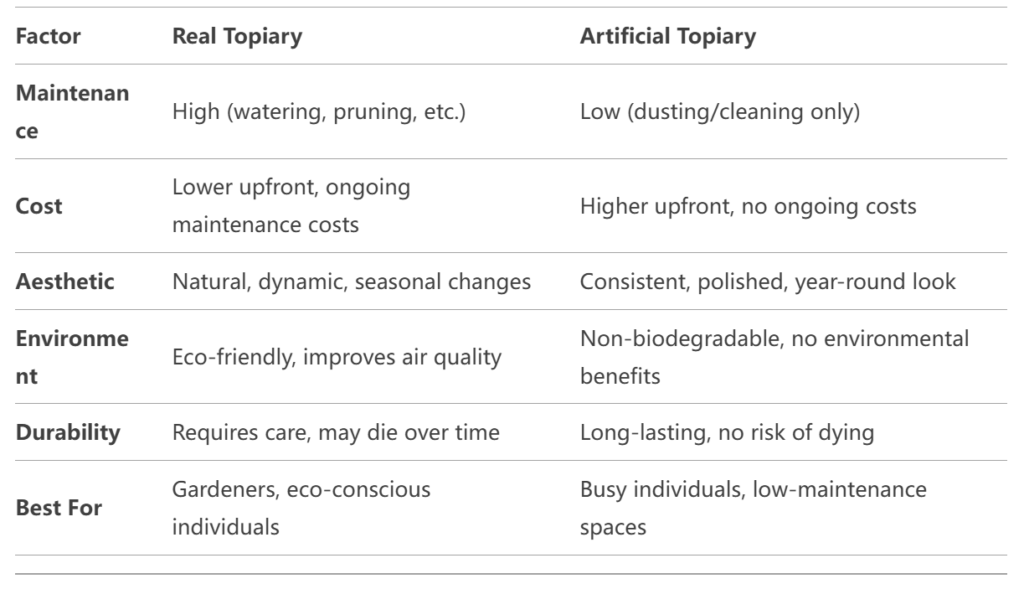
– FAQs about Artificial Outdoor Topiary:
1. How long will a faux outdoor topiary actually last?
A high-quality anti-UV artificial topiary made will typically last 5 to 10+ years outdoors without significant fading. The primary factor influencing its lifespan is the intensity of direct sunlight in your climate. They are a durable, long-term investment compared to the yearly life cycle of some real plants.
2. Can fake outdoor topiaries withstand strong wind and snow?
Yes, they are designed for it, but proper installation is key. For wind, the solution is weight; our topiaries come with a weighted base that should be placed inside a larger, heavier decorative planter filled with sand, gravel, or soil to anchor it securely. For snow, the durable PE foliage resists cracking in the cold, but we recommend gently brushing off heavy, wet snow to prevent the branches from bending under the weight.
Final Decision:
For those who love nature and don’t mind the upkeep, real topiary is a good choice. But for busy individuals and those in harsh climates, artificial topiary is the ideal solution. Choose what best fits your lifestyle and needs!
Ready to embrace the lasting beauty and effortless elegance of fake topiaries? As a specialized manufacturer, FeelReal crafts a wide range of realistic, UV-resistant outdoor plants designed for durability and timeless style. You will find the perfect maintenance-free statement piece for your next commercial or residential project.
